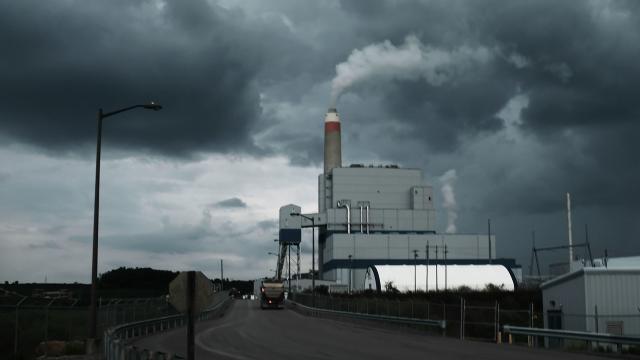To meet the goals set in the Paris Climate Accord and avert climate catastrophe, UN scientists say nations must cut their greenhouse gas emissions to half of their 2018 levels by 2030 and aim for net zero emissions by 2050. That means cutting emissions by 7.6 per cent every year for the next decade. But according to a new report from an independent federal energy-monitoring agency, the U.S. is hardly on track to hit these goals, with meager 4 per cent decline in emissions by 2050.
As the world’s largest historical emitter of greenhouse gases, the U.S. bears a particular responsibility to cut emissions quickly. Officials haven’t done nearly enough to make that a reality, but there has been some progress. Coal plants are closing, clean energy is on the rise, and last year, U.S. emissions did drop”albeit by less than 2 per cent.
U.S. carbon emissions are only expected to fall 4 per cent by 2050, according new data from the U.S. Energy Information Administration (EIA). They expect emissions to decrease throughout the 2020s, but “resume modest growth” in the following decade.
It’s not surprising that the report doesn’t forecast major emissions reductions. The EIA bases its predictions on a future with no major policy changes. Really, the report “is a projection, not a prediction,” EIA chief Linda Capuano said at a press conference on Thursday.
It’s not that the EIA thinks that nothing will change without new policy. The report projects 38 per cent of the country’s energy to come from renewables by 2050, which is a pretty big jump”we’re only at about 19 per cent today. Power generated from coal is expected to drop from 24 per cent to 13 per cent, and nuclear energy’s share will drop from 19 per cent to 12 per cent. But they still don’t expect overall emissions to fall much, thanks mostly to increased demand in two sectors: heavy industry and transportation.
The heavy industry sector, which today is responsible for about 22 per cent of U.S. carbon emissions, encompasses a wide variety of manufacturing, from cement and steel to paper and food. Some industries will see some positive changes”food production will use more renewable energy, and the iron and steel industry will use less coal”but the bulk of production in the U.S. will run on shale oil. Increasingly, the sector will rely on cheap natural gas, too. By 2050, natural gas will be responsible for 36 per cent of U.S. energy, just slightly down from 37 per cent today.
The transportation sector’s emissions will increase, too. The report projects that even though increases in fuel economy standards will drive a “decrease in U.S. motor gasoline consumption, which declines by 19% through 2050,” there will be more demand for heavy-duty, gas-guzzling vehicles. Air travel will be an even bigger problem”the agency projects that jet fuel consumption will rise by 31 per cent by 2050, because “increases in air transportation [will] outpace increases in aircraft fuel efficiency.”
Remember, this doesn’t have to be our fate. These projections assume that policy in the U.S. remains static. A lot could go wrong in the next 30 years, especially if we keep seeing the kind of environmental rollbacks that have defined the past few years under the Trump administration, but a lot could go right, too. New policies could regulate car and air emissions, make industry more sustainable, and even stop fossil-based energy production altogether.
And really, the projections make it clear that inaction is a death wish. A mere 4 per cent reduction in emissions by 2050 would help usher in complete climate chaos. Our survival depends on how quickly we can change course.
